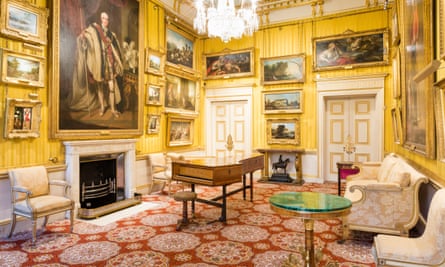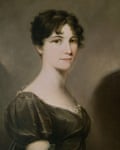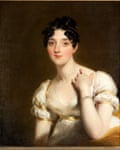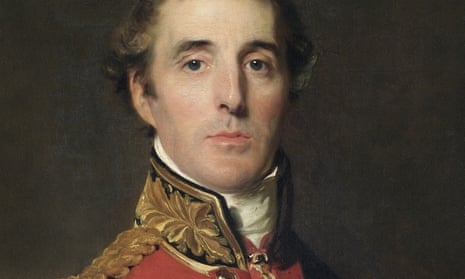He was known as the Iron Duke, a moniker gained from his steadfastness in war and politics – and hinting too at manliness. But the Duke of Wellington, victor over Napoleon at Waterloo in 1815 and then twice prime minister, was not just a man’s man. He actively sought the company of intelligent female friends with whom he could discuss world issues, a new exhibition reveals.
While he did have affairs, “his closest friends were women, not men,” said Josephine Oxley, keeper of the vast Wellington Collection, which has been in the family for more than two centuries.
Wellington’s relationship with women is explored in a new exhibition opening in late April at the long-time London home of the dukes of Wellington, Apsley House at Hyde Park Corner. The show will focus on paintings and drawings relevant to his female friendships – some of which have not been seen publicly before – as well as journals, diaries and letters.
Rory Muir, author of an acclaimed 2013 Wellington biography, said: “They were generally highly intelligent women with a keen interest in politics and public affairs – like Harriet Arbuthnot, as well as Lady Salisbury, Lady Bessborough and Lady Shelley.
“Wellington took their opinions seriously and enjoyed discussing events with them. He did not treat women as intellectually inferior, nor did he feel anything was wrong with them being involved in political discussions. Over the years, he did have a number of affairs but that was probably secondary, as most of his closest friendships were with people who were not his lovers.”

His marriage to Kitty Pakenham, who, like him, came from an Anglo-Irish family, was loveless. Wellington, born Arthur Wesley, fourth son of the Earl of Mornington, wooed Kitty unsuccessfully for more than a decade from the mid-1790s. He was initially rejected by her father, Lord Longford, before, 12 years later, it was finally agreed they could marry.
While besotted with her intended, just before the wedding in April 1806 Kitty was prescient enough to write to him: “I don’t think I am going to be a companion for you and a friend for life.”
Wellington soon realised she had been right. In conversations with his closest confidante, Mrs Arbuthnot, he commented, “Would you have believed that anybody could have been such a damned fool to marry her [Kitty]?” – as Arbuthnot recorded in her journals.

Another remark from the Arbuthnot journals, owned by the Wellington collection, was that “discussing political or important subjects with her [Kitty] was like talking Hebrew to her”.
Kitty led a fairly solitary married life, though she was close to her two sons. She painted – her previously unseen watercolour set and a few drawings are in the exhibition – and did needlework. She also kept an occasional diary but confessed: “so uninteresting and so unvaried is my life that to keep a daily journal is almost impossible”.
However, one entry from September 1809, while her husband was fighting the Peninsular war with Spain against France, hopes that “surely Heaven will protect the good and the brave man!”
Wellington’s romantic affairs are hard to prove, though it seems there was one with Lady Charlotte Greville. Two intriguing letters survive – one from her husband, who tells her that their own son (the diarist Charles Greville) “is not blind to your conduct with the Duke of Wellington”. The reply is not to her husband but to her son, telling him that “she would regret being obliged to renounce altogether his society”.

Then there was the Italian opera singer Giuseppina Grassini, whom Wellington met in Paris in 1814, after being appointed Britain’s ambassador to France. There is a miniature painting of Grassini in the exhibition. “One of his great loves was opera,” says Oxley, who has curated the new exhibition. “They may have slept together, but so much is society gossip.”
He was also taken with the American-born Marianne Patterson, who was travelling in Europe when they met. “He was infatuated by her,” Oxley says. In 1818, Wellington commissioned the celebrated artist Sir Thomas Lawrence to do a portrait of him in his bright red tunic for her, and another of her for him. Patterson kept the painting of the duke until her death in 1853.
But there is an odd twist to the story: in the 1820s, after the death of her first husband, she married Wellington’s brother Richard – a union that did not amuse the duke. The work was then bequeathed to the 2nd duke, and has since been kept at the Wellingtons’ Hampshire home. The two portraits will now be displayed for the first time together in the Apsley House exhibition.
After the death of Kitty in 1831, and very briefly becoming prime minister for the second time in 1834, Wellington continued to enjoy the company of women. Perhaps the most unlikely relationship for a former Tory premier was with the social reformer Angela Burdett-Coutts, his neighbour in Piccadilly. She even proposed to him in 1847, when she was 33 and he was 77.
He replied in a letter, advising her “not to throw yourself away on a man old enough to be your grandfather”.
Wellington, Women and Friendship opens from 19 April with special tours for English Heritage members.
